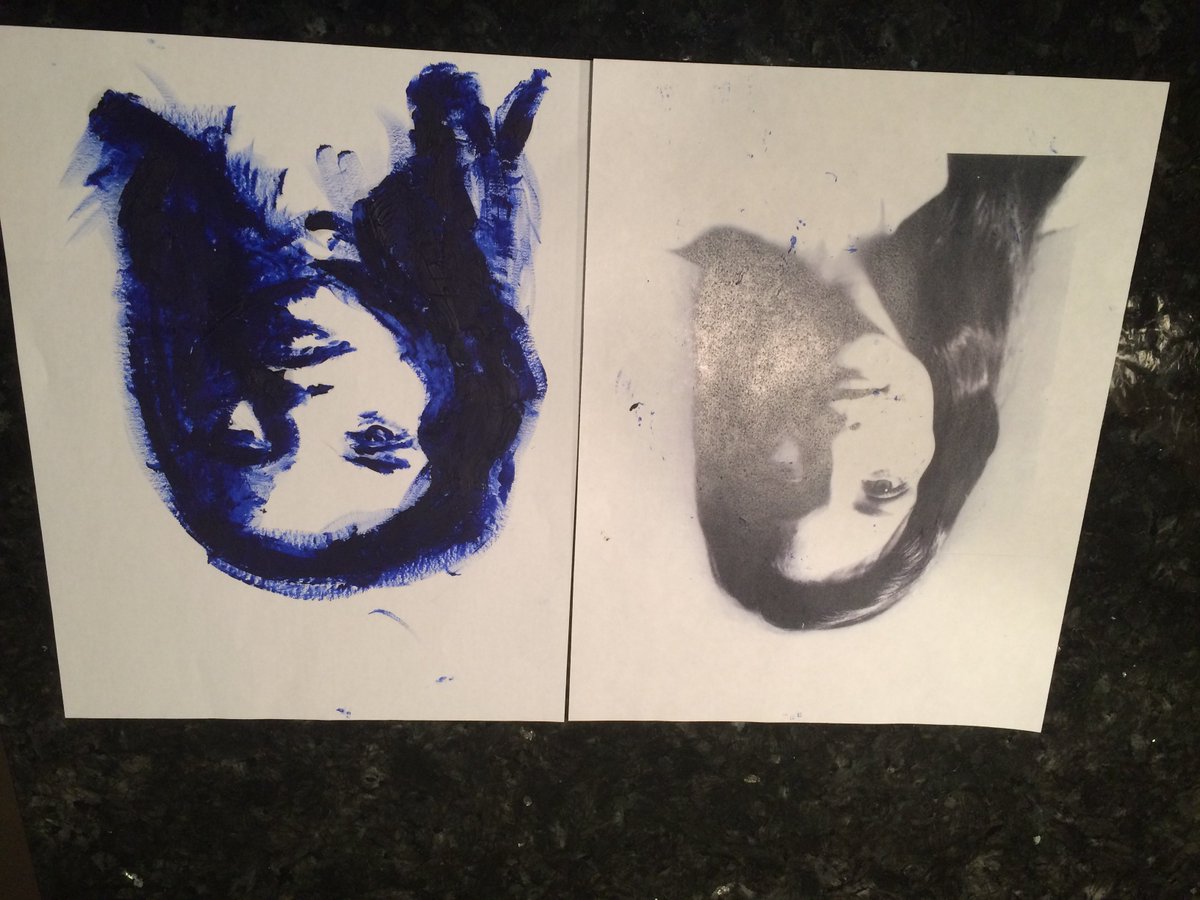Do you remember when you were young and played on the monkey bars? When you were overcome with super strength and curiosity turned you upside down? The backs of your knees hinged over the metal poles and your body trusted itself to unfold and dangle. The wood chips became your ceiling, the clouds a fluffy carpet. Your world and perspective had changed so much and yet, you were still you.
On Wednesday, I took the first class of a term of an Oil Painting course at the Ann Arbor Art Center, a medium I’ve never worked with before. In fact, I’ve never had any technical training on painting at all. I’ve always been a more splat and spread sort myself. But like all second-semester seniors who want to absorb the most out of this college life as I can get, I decided to buck up and challenge myself, destress after classes, and perhaps come away with a framable piece of art.
The first exercise was to use our paints to copy a black and white photograph of a young girl. The girl was half in shadow, save for a little triangle of light where her eye peeked through. We also were not using any water with our paints, which meant that we would have to cake a lot of paint on the canvas because it dried so quickly. And things kept getting more interesting. “Now turn the photograph upside down,” our instructor, Claudia, said.
Suddenly, the face I had just seen before disappeared. Where her shadowy eye had been was now just an imprint of a hollowed out triangle (think pirate eye patch with a hole in the center). There was a slice of light that cut through what had been the girl’s neck. Where had that been before? To the left of her visible eye was a curvaceous bump: the indent where the skull shapes the eye bone. Where did her nose go? All I could see was a black dot in the center of the face. Not only was the model photograph upside down, we were going to paint to match this upside down figure. Claudia told us, “Don’t think of it as a face. Take each part of the photograph as its own shape. What’s connected? Where is the white space? Think tonally – is this dark or light?” This was easier since we were only using one color. You either painted a section of canvas or left it alone. But, still, this was no walk in the park for a beginner like me.

Now take your computer and flip it (or do a handstand and crane your neck). I suppose that my painting has a slight haunting Victorian schoolgirl look to it, but I walked away from class quite proud. Somehow, I had created this person on the paper in front of me. The ultramarine hue was beautiful and I hope to use it much more in the class. The girl’s visible eye turned out really well, as did her lips. I know there is much more to work on, technique-wise, but I think the most important lesson is to practice perspective. Keep challenging everything that you see. An eye isn’t just an eye. It’s a line connected to another line that doesn’t touch but curves around and loops back. A shadow isn’t just a dark spot; it’s a locus of contrast, of contact, of substance. I expect that I’m going to walk away from this painting term with a lot more on my palette than just a few still lifes.
Maybe it’s time for a trip down to the local monkey bars to get some more practice on perspective.

